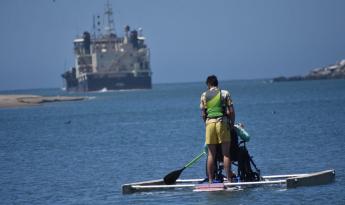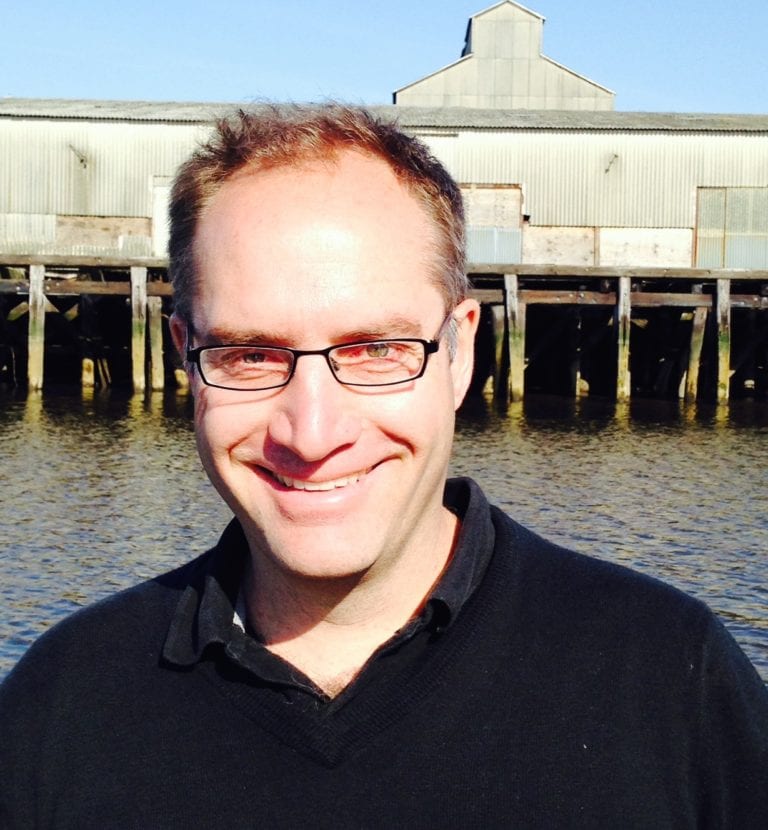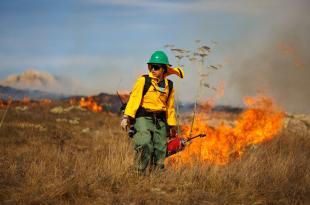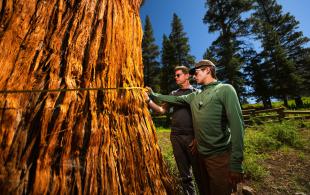Human Activity Contributes to Nuisance Flooding, Cal Poly Study Finds

Human interventions in many coastal areas across the U.S. — including construction of piers and jetties and harbor dredging — have contributed to nuisance flooding, according to a study co-authored by a Cal Poly engineering professor.
The interventions have combined with rising sea levels in these areas to exacerbate the impact of climate change. While the so-called “sunny day flooding” might not be deadly, it can destroy property, overload stormwater systems, impact travel and cost municipalities money, according to the study funded by the National Science Foundation and published in the journal Science Advances.
“Any change to an estuary that alters the likelihood of flooding or erosion is potentially problematic, since our infrastructure — from homes to sea walls — was built with a static, unchanging system in mind,” said Stefan Talke, an associate professor in Cal Poly’s Civil and Environmental Engineering Department.
Tides are caused by the gravitational pull of the moon and sun on bodies of water. But while we often think of tides as regular and predictable — hence, the use of tide charts — tides are changing in many places as a result of human intervention. For example, changes to the bathymetry of a bay or harbor — basically, the geometric shape of the underwater landscape — can also affect the tides.
For this reason, planners should be aware of potential problems. “The more we know, the smarter we can design things,” Talke said.

The study, also co-authored by Thomas Wahl and Sida Li of the University of Central Florida, analyzed National Oceanic and Atmospheric Administration tidal gauge data from the past 70 years at 40 locations along the Atlantic, Gulf and Pacific coasts and compared that to historical tidal measurements dating back to the 1840s. Of those locations, nearly half had experienced more nuisance flooding due to higher local tide ranges.
“Seeing how many nuisance flooding events occurred in the past and are happening today simply because of tidal changes should be motivation to keep alterations to sensitive estuarine systems at a minimum as to not further exacerbate the problem, which we already face because of sea level rise,” said Wahl, an assistant professor in UCF’s Department of Civil, Environmental and Construction Engineering.
The impact of human intervention on flooding can vary. New York City’s Jamaica Bay, which saw disastrous flooding during Hurricane Sandy in 2012, continues to have problems today. But flooding isn’t a problem closer to Cal Poly, where the Morro Bay harbor, for example, is regularly dredged by the Army Corps of Engineers.
“Along the coast, structures such as Pismo Pier are probably quite insignificant, relative to the vast size of the tide wave propagating up the coast,” Talke said. “The impacts of tidal change are often most felt in low-lying areas which are subsiding, which includes much of the Southeast and Gulf Coast. The location which was most affected by tidal change was Wilmington, North Carolina, followed by San Francisco.”
While NOAA has digitized tidal data back to the early 1900s, Talke found that the U.S. government has been measuring tides since the 1840s — including data that was recorded even before modern dredging, harbor development and land reclamation. At the National Archives in College Park, Maryland, Talke took photos of tens of thousands of pages of tidal measurements, which were then digitized over a decade and used for comparison.
Some human interventions, such as dredging, are intended to be helpful. In Morro Bay, for example, dredging makes it safer for boats to navigate the harbor mouth. But in other cases, the negative impact of intervention might outweigh the gains.
“Hence, understanding what drives the changes in nuisance flooding is very important,” said Li, a UCF graduate student.
While planners might refer to the data before any alterations are made in coastal areas, in some cases it might be possible to reverse engineer problems caused by the changing tides.
“For example, if flooding during king tides becomes a problem in an estuary, one could in some places reduce tides to historical norms and therefor mitigate the problem,” said Talke, who has published numerous papers on the impact humans have on tides.
Talke’s work has drawn attention to the issue, with stories in Popular Science, Wired and the BBC.
Photo above: Cal Poly engineering student Alexander Holthaus demonstrating his team’s adaptive paddleboard to Randy Coffman of Central California Adaptive Sports Center as the Army Corps of Engineers’ 200-foot Yaquina dredges the harbor in Morro Bay, California, in this photo from the summer of 2019.




